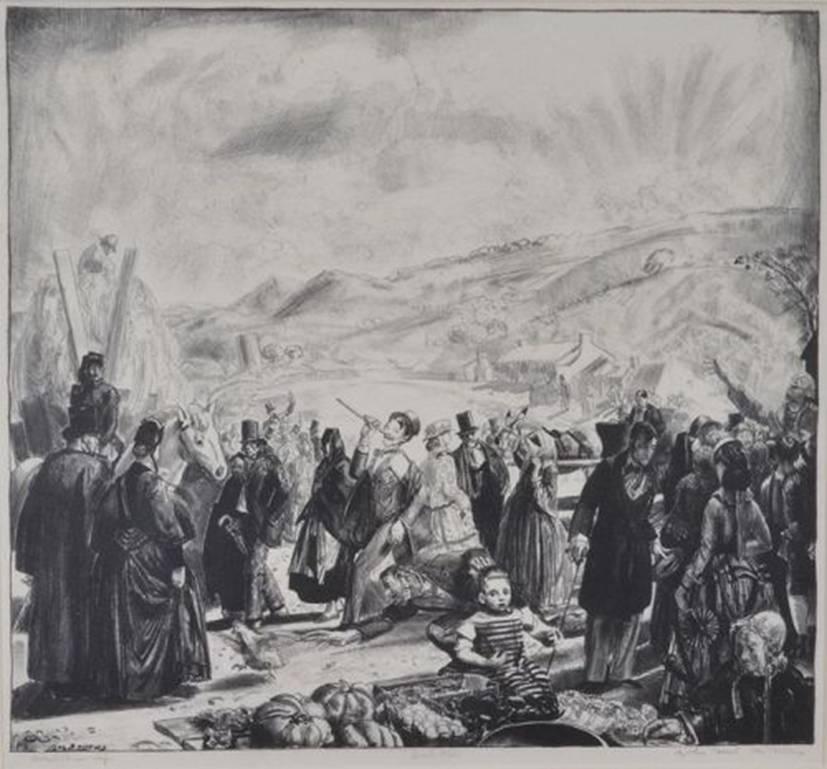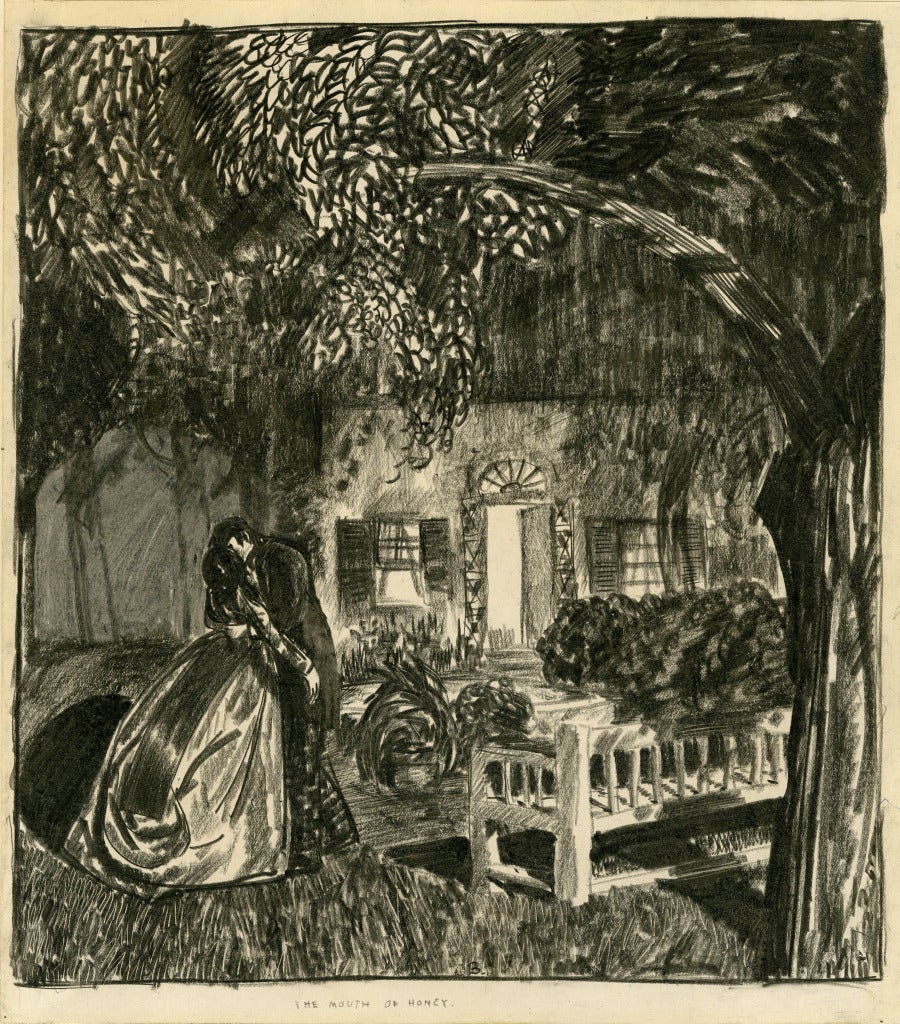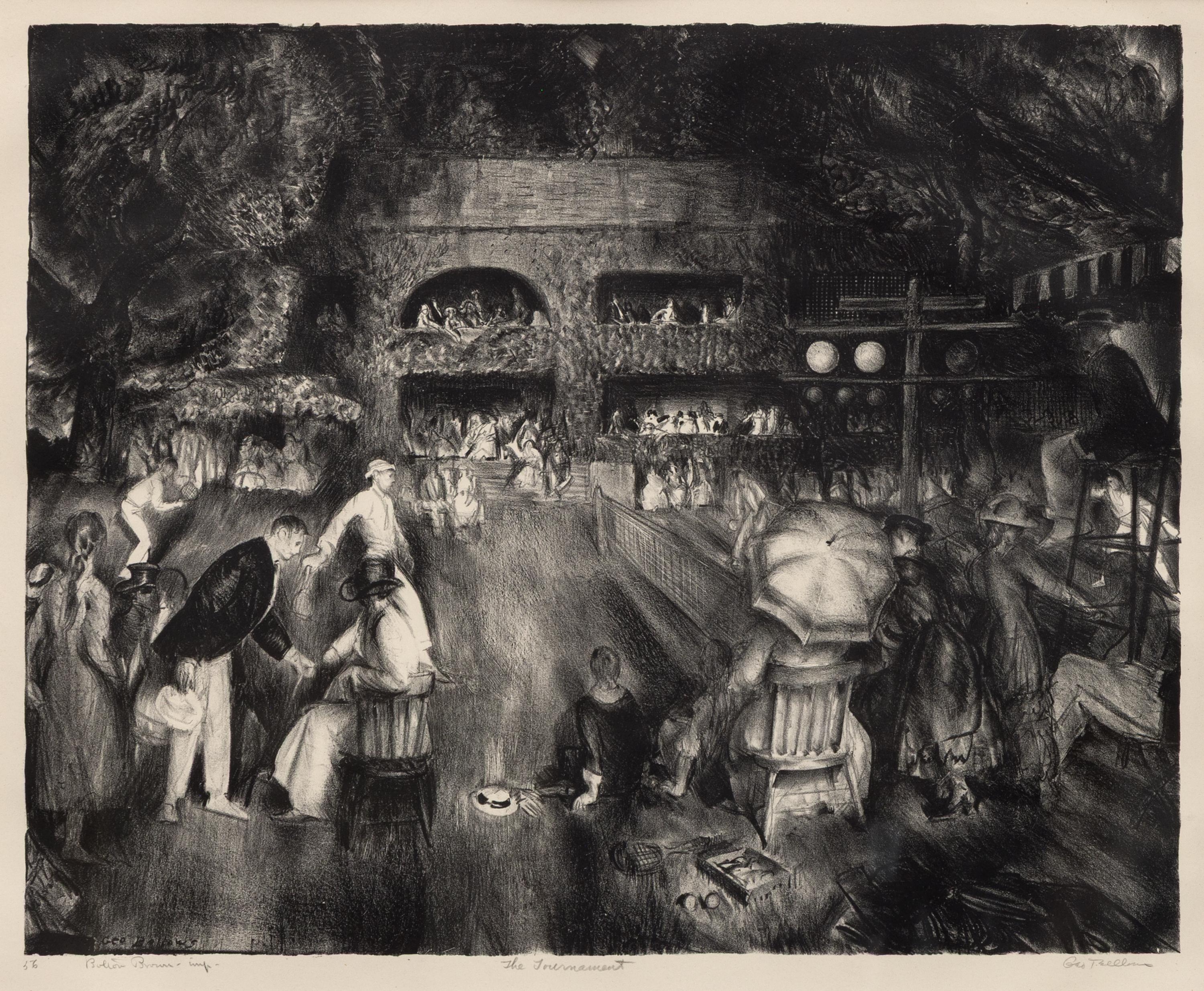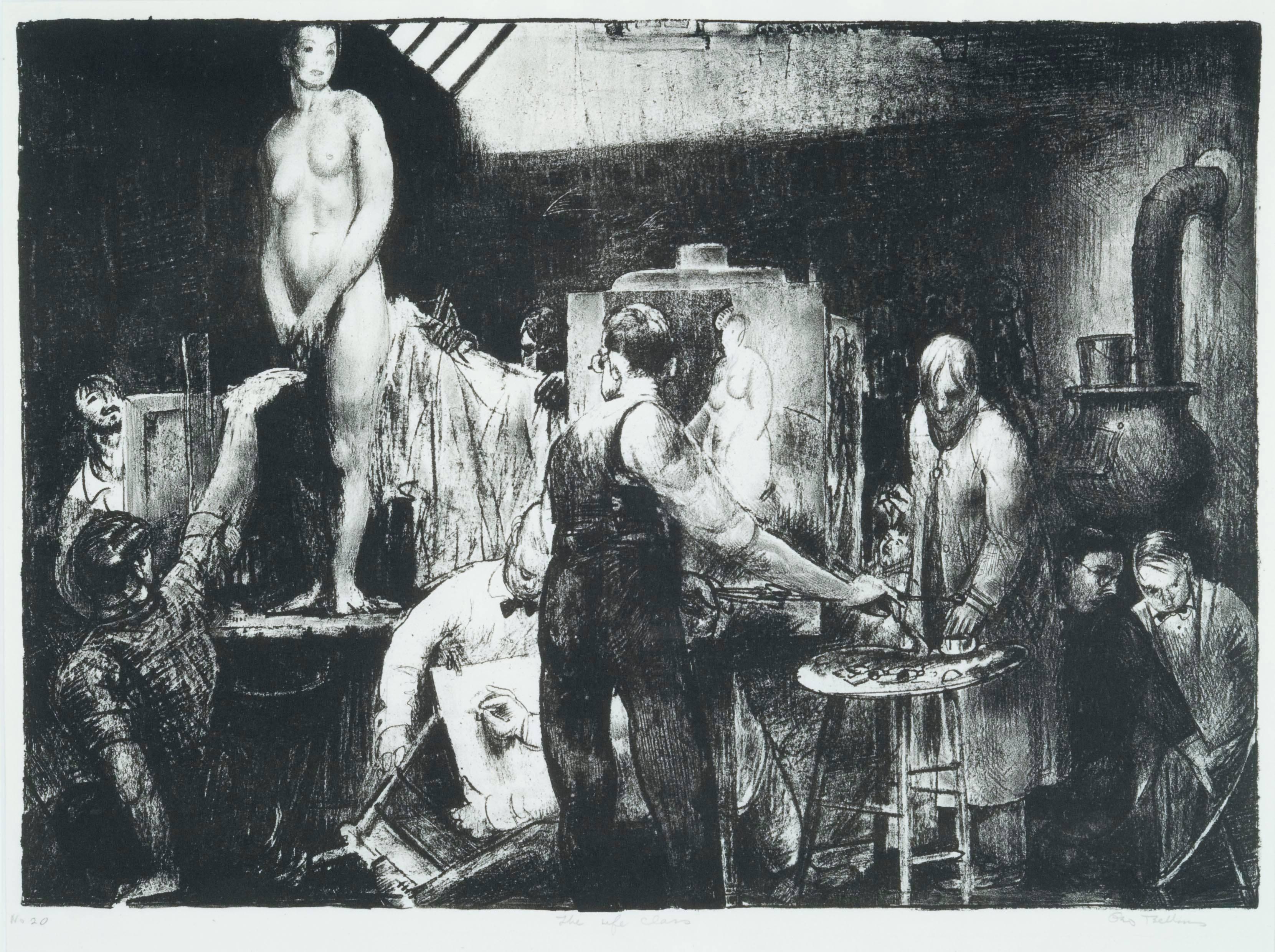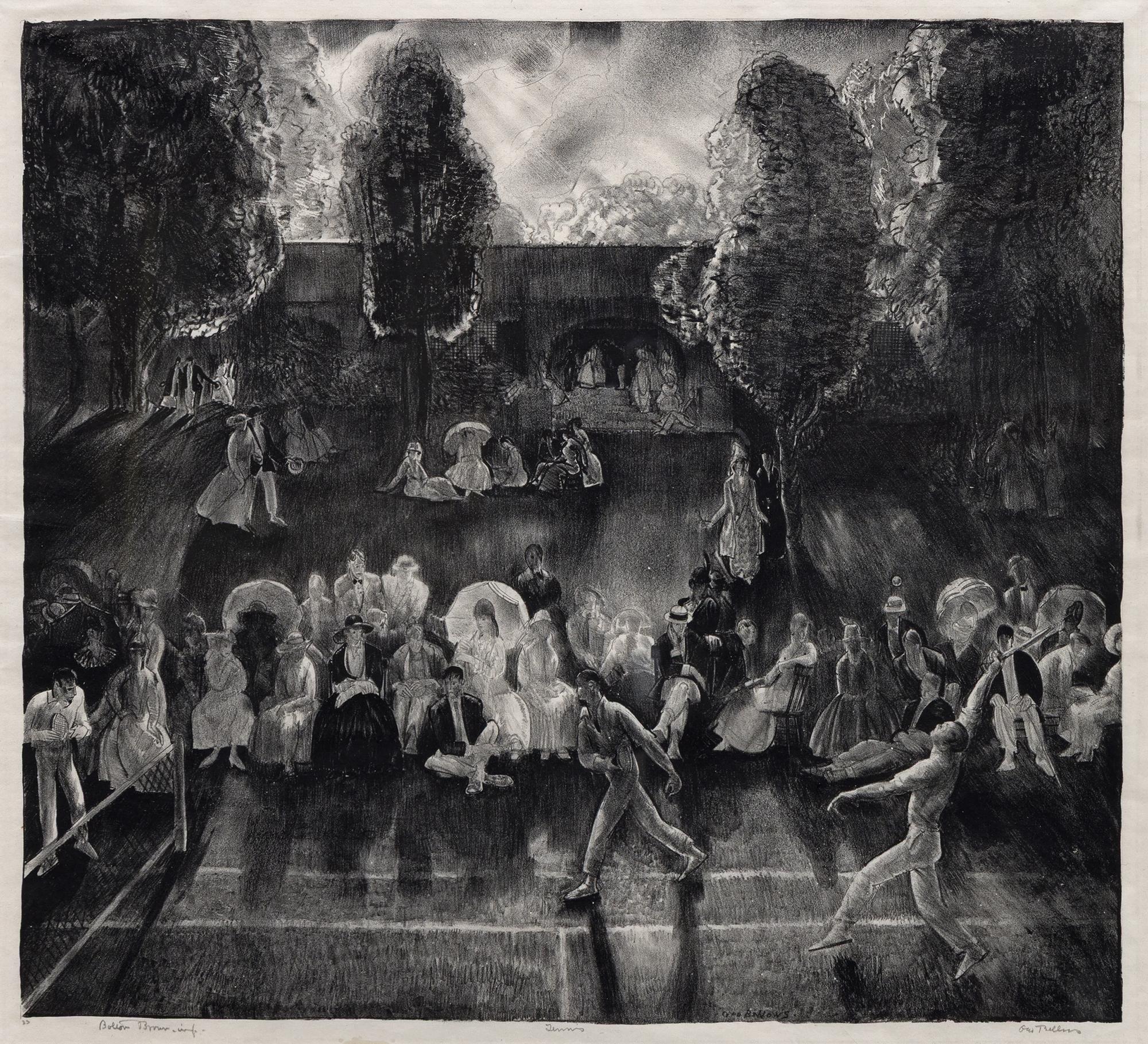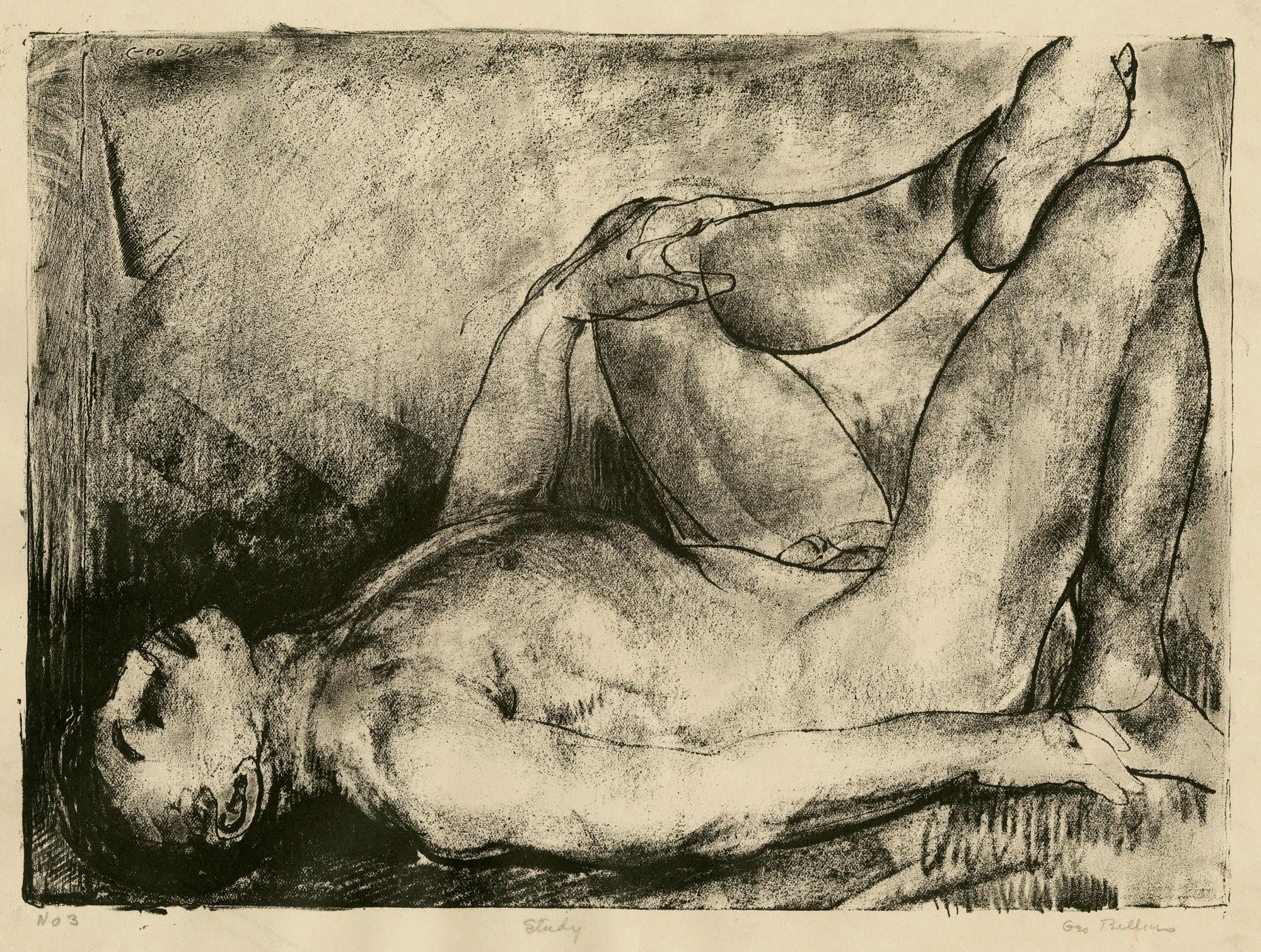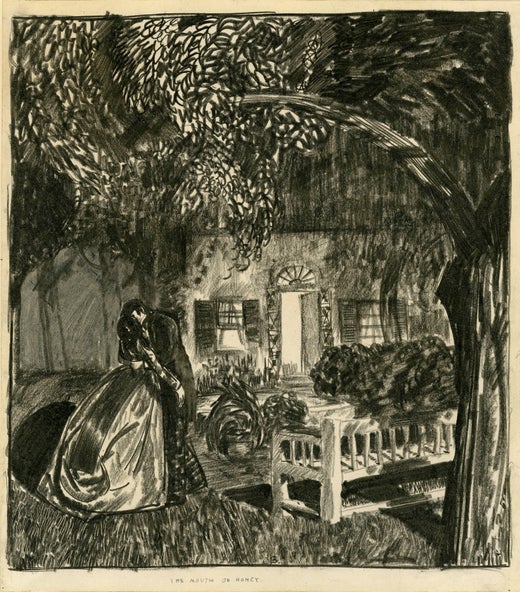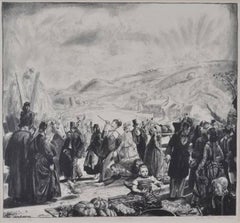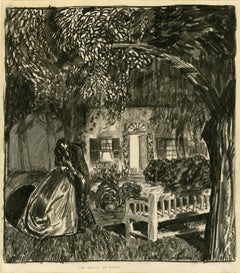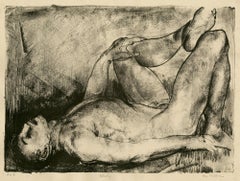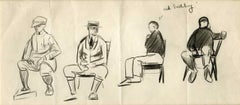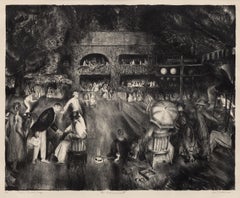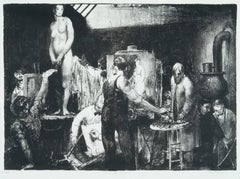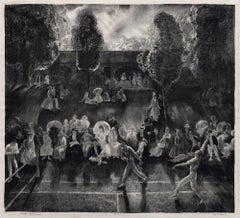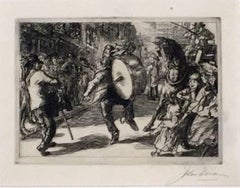Items Similar to The Hold Up, First State
Want more images or videos?
Request additional images or videos from the seller
1 of 7
George Wesley BellowsThe Hold Up, First State1921
1921
$7,500
£5,816.69
€6,613.49
CA$10,701.01
A$11,679.22
CHF 6,134.21
MX$141,849.36
NOK 76,972.77
SEK 72,236.81
DKK 49,386.11
About the Item
Signed in pencil by the artist lower right
Titled "Hold Up" by the artist in pencil.
Signed by the printer Bolton Brown lower left.
Edition: 42 in this state
Note: In The Hold Up, second state (dark version) there are an additional 29 impressions
Condition: Excellent
Provenance: Estate of the artist
H. V. Allison & Co. (agent for the Bellows Trust)
Columbus Gallery of Art, Art Sales, Columbus Museum of Art
Private Collection, Columbus, Ohio
Note: When exhibited at Frederick Keppel & Company, the New York Times reviewer comments this was a "subject interpreted in the spirit of Dickens. With a hint of melodrama, a hint of comedy, and a pinch of realism."
An iconic "Ash Can" school lithograph. Along with Bellows image "Hungry Dogs", the two lithographs are the finest depicts of the Hell's Kitchen area of Manhattan during the post war years. Located just north of Bellows home and studio at 146 East 19th Street.
- Creator:George Wesley Bellows (1882-1925, American)
- Creation Year:1921
- Dimensions:Height: 11 in (27.94 cm)Width: 8.5 in (21.59 cm)
- Medium:
- Movement & Style:
- Period:
- Condition:Housed in the original H. V. Allison frame, with provenance labels on reverse.
- Gallery Location:Fairlawn, OH
- Reference Number:Seller: FA106271stDibs: LU14013978532
George Wesley Bellows
George Bellows, an American artist, was born in Columbus, Ohio in 1882, the only child of a successful building contractor from Sag Harbor, New York. He entered Ohio State University in 1901, where he played baseball and basketball and made drawings for college publications. He dropped out of college in 1904, went to New York, and studied under Robert Henri (American, 1865 – 1929) at the New York School of Art, where Edward Hopper (American, 1882 – 1967), Rockwell Kent (American, 1882 – 1971), and Guy Pène du Bois (American, 1884 – 1958) were his classmates. A superb technician who worked in a confident, painterly style, Bellows soon established himself as the most important realist of his generation. He created memorable images of club fights, street urchins swimming in the East River, and the Pennsylvania Station excavation site and garnered praise from both progressive and conservative critics. In 1910 Bellows began teaching at the Art Students League and married Emma Story, by whom he had two daughters. After 1910 Bellows gradually abandoned the stark urban realism and dark palette characteristic of his early work and gravitated toward painting landscapes, seascapes, and portraits. Bellows helped organize the Armory Show in 1913, in which five of his paintings and a number of drawings were included. That year he was elected a full member of the National Academy of Design. He had leftist political views and contributed illustrations to the Socialist publication The Masses from 1912 to 1917. Bellows began to make lithographs in 1916 and his exceptional talent engendered a revival of interest in the medium. He worked in Maine, in Carmel, California, and in Middletown, Rhode Island, and was a founding member of the Society of Independent Artists and a charter member of the Association of American Painters and Sculptors. In 1919 he taught at the Art Institute of Chicago. Bellows, who never went to Europe, is regarded as a quintessential American artist whose vigorous style enabled him to explore a wide range of subjects from scenes of modern urban life to portraits of his daughters, to turbulent Maine seascapes. As an early biographer noted, Bellows “caught the brute force of the prizefighter, the ruggedness of the country pasture, the essence of childhood and recorded them appropriately not only for his own generation but for all time.”[1] [1] [Frederick A. Sweet], George Bellows: Paintings, Drawings and Prints (Art Institute of Chicago, IL, 1946). Robert Torchia September 29, 2016
About the Seller
5.0
Recognized Seller
These prestigious sellers are industry leaders and represent the highest echelon for item quality and design.
Platinum Seller
Premium sellers with a 4.7+ rating and 24-hour response times
Established in 1978
1stDibs seller since 2013
819 sales on 1stDibs
Typical response time: <1 hour
Associations
International Fine Print Dealers Association
- ShippingRetrieving quote...Shipping from: Fairlawn, OH
- Return Policy
Authenticity Guarantee
In the unlikely event there’s an issue with an item’s authenticity, contact us within 1 year for a full refund. DetailsMoney-Back Guarantee
If your item is not as described, is damaged in transit, or does not arrive, contact us within 7 days for a full refund. Details24-Hour Cancellation
You have a 24-hour grace period in which to reconsider your purchase, with no questions asked.Vetted Professional Sellers
Our world-class sellers must adhere to strict standards for service and quality, maintaining the integrity of our listings.Price-Match Guarantee
If you find that a seller listed the same item for a lower price elsewhere, we’ll match it.Trusted Global Delivery
Our best-in-class carrier network provides specialized shipping options worldwide, including custom delivery.More From This Seller
View AllThe Irish Fair
By George Wesley Bellows
Located in Fairlawn, OH
Irish Fair
Lithograph, 1923
Signed and numbered in pencil by the artist (see photo)
Titled "Irish Fair" by the artist in pencil
Edition: 84
Housed in an archival frame with acid free matting (see photo)
Provenance:
Estate of the artist, Bellows Family Trust
H.V. Allison & Company (label)
Private Collection, Columbus
References And Exhibitions:
Reference: Mason 153
Note: An illustration commissioned by The Century Company for Don Byrne's novel The Wind Bloweth
Image: 18 7/8 x 21 3/8"
Frame: 29 1/2 x 30 1/2"
“Eleven on a hot July morning, and the little town...
Category
1920s Ashcan School Figurative Prints
Materials
Lithograph
The Mouth of Honey
By George Wesley Bellows
Located in Fairlawn, OH
The Mouth of Honey
Lithographic crayon and mixed media on paper mounted to support paper
Initialed by the artist "GB" bottom center on image. (see photo)
Titled in pencil in bottom m...
Category
1920s Ashcan School Drawings and Watercolor Paintings
Materials
Crayon
Man on His Back, Nude
By George Wesley Bellows
Located in Fairlawn, OH
Man on His Back, Nude
Lithograph, c. 1916
Signed by the artist lower right: Geo Bellows (see photo)
Annotated bottom left: No. 3 by the artist (see photo)
An unredorded trial proof b...
Category
1910s Ashcan School Nude Prints
Materials
Lithograph
red ballboy or Studies for "Tennis Tournament"
By George Wesley Bellows
Located in Fairlawn, OH
Red Ballboy or Studies for "Tennis Tournament"
Crayon on paper, c. 1920
Unsigned
Condition: three vertical folds created by the artist to transport the drawing from the tennis match ...
Category
1910s Ashcan School Figurative Drawings and Watercolors
Materials
Graphite
Man, Wife and Child
By John French Sloan
Located in Fairlawn, OH
Man, Wife and Child
Etching, 1905
Signed and titled in pencil by the artist below image (see photo)
Annotated in pencil by the artist "100 proofs"
Signed and dated in the plate lower...
Category
Early 1900s Ashcan School Figurative Prints
Materials
Etching
Keying Up - The Court Jester
By William Merritt Chase
Located in Fairlawn, OH
Keying Up - The Court Jester
Etching with drypoint, 1879
Signed in the plate lower left corner (see photos)
Proof before engraved title and engraved names
Printed on thin light golden Japanese tissue paper
In the final state, with engraved titled and typeface engraved artist’s signature below the image
Condition: excellent
Plate size: 6-5/8 x 4-1/4"
According to Pisano, this image was very popular during Chase’s life. It is based on his famous painting, Keying Up-The Court Jester, in the collection of the Pennsylvania Academy of Fine Arts. The painting was created in Munich during the artist’s studies there. It was exhibited in the 1876 Centennial Exhibition in Philadelphia where it won a Medal of Honor and helped establish the artist’s reputation as a leading American painter.
Chase, always conscious of self promotion, created the etching and had numerous impressions printed. He sold them for a modest price to increase his fame. The etching was later published in Sylvester R. Koehler, American Art Review, September 1878. It was for this American Art Review printing that the engraved titled and type face signature below the image were added to the plate.
This example was part of a group of impressions that came down in the Chase family via his daughter Dorothy Bremond Chase, his third daughter. They were acquired at auction in a single auction lot, housed in a paper board folder. The consignor was Associated American Artist’s as they were liquidating their stock prior to closing the gallery.
Dorothy was the subject of Chase’s painting, My Little Daughter Dorothy. C. 1894, in the collection of the Detroit Institute of Arts as well as numerous other portraits of her.
Reference: Pisano/Bake, Volume 1, Pr. 3, illustrates the rare 1st state, this being a 2nd state before any other the engraved title and Chase's name in the bottom margin which are found in the third state.
Artist bio in file (Chase)
In 1883 Chase was involved in the organization of an exhibition to help raise funds for a pedestal for the Statute of Liberty. The exhibition featured loans of three works by Manet and urban scenes by the Italian Impressionist Giuseppe de Nittis. Both artists influenced Chase's Impressionistic style that gave rise to a series of New York park scenes. It is also thought that he was influenced by John Singer Sargent's In the Luxembourg Gardens (1879) which was exhibited in New York at this time. Indeed, Chase had met Sargent in Europe in 1881, the two men becoming lifelong friends with Sargent painting Chase's portrait in 1902.
On another European trip in 1885, Chase met James McNeill Whistler in London. While Whistler had a reputation for being difficult, the two artists got along famously and agreed to paint one another's portrait. Eventually, however, Whistler's moods began to grate with Chase who wrote home stating "I really begin to feel that I never will get away from here". For his part, Whistler criticized Chase's finished portrait and, according to Hirshler, "complained about Chase for the rest of his life". While no record exists of Whistler's portrait of Chase; Chase's portrait of Whistler remains a well-known piece in his oeuvre.
In 1887 Chase married Alice Gerson, the daughter of the manager of a lithography company. Though some fifteen years his junior (Chase was 37), he had known Alice for some time through her family's devotion to the arts. The pair, who would enjoy a happy marriage with Alice in full support of her husband's career, settled initially in Brooklyn where their first child was born. The couple would parent six daughters and two sons and it was only his family that could rival his devotion to his art. Indeed, Chase often combined his two loves by painting several portraits of his wife and children in Brooklyn parks before the couple relocated to Manhattan.
Later Period
Between 1891 and 1902, Chase and his family spent their summers at a purpose-built home and studio in Shinnecock Hills, a close suburb of the upmarket town of Southampton on the south shore of Long Island (roughly 100 miles east of New York). Chase set up, and taught two days a week, at the nearby Shinnecock Hills Summer School of Art which benefitted from the financial backing of local art collectors. It was at Shinnecock that Chase, taken in by the region's striking natural surroundings, painted several Impressionistic landscapes. As Bettis put it, "There, among the dunes, in the bright sunlight and sea air his painterly impulse was given free sway, and he produced some of his freest and loveliest work". His passion for the area was so felt he even gave his daughter Hazel the middle name of Neamaug, in honor of the rich Native American history of Shinnecock. Chase was equally focused on the students that came to the School and who he encouraged to paint in the modern plein air style favored by the French Impressionists.
Although Chase was making a name for himself as an Impressionist, he never abandoned his commitment to the sombre tones and academic tropes he had learned in Munich, though these he reserved for his portraits, and for his series of striking still lifes featuring dead fish. Chase was in fact a successful society portraitist - he painted fashionable women for a fee of $2,000 - and would paint his students as "samples" which he then donated to leading art institutions (such as Lady in Black (1888) which he donated to the Metropolitan Museum in 1891).
In 1896, facing financial difficulties, Chase flirted with the idea of giving up his teaching in New York and traveled with his family to Madrid where he developed a passion for bullfighting. Chase returned however to Shinnecock in June to teach his yearly summer art class, and in the fall of that year, established his own art school in Manhattan: the Chase School which was modelled on the Académie Julian in Paris. Chase lacked business savvy, however, and the Chase School lasted only two years before it was placed under new management. It continued as the New York School of Art (changed to Parsons School of Design starting 1941) with Chase as head the School for eleven more years. Chase also taught during this period at the Pennsylvania Academy of Fine Arts.
In 1902, following the premature death of his friend John Twachtman, Chase was invited to join the Ten American Painters group (who included amongst its members, Frank Weston Benson, Thomas Wilmer Dewing...
Category
1870s American Impressionist Figurative Prints
Materials
Etching
You May Also Like
The Tournament (Tennis at Newport)
By George Wesley Bellows
Located in Palm Desert, CA
A lithograph by George Bellows. “The Tournament (Tennis at Newport)” is a realistic lithograph on paper in black and white by American Realist artist, George Bellows. Bellows' depict...
Category
1920s American Realist Figurative Prints
Materials
Lithograph
THE LIFE CLASS - SECOND STONE (THE MODEL, LIFE CLASS).
By George Wesley Bellows
Located in Portland, ME
Bellows, George. THE LIFE CLASS - SECOND STONE (THE MODEL, LIFE
CLASS). Mason 43, Bellows 193. Lithograph, 1917. Edition of 49,
signed by Bellows. Inscribed "No.20," titled and sign...
Category
Early 20th Century Figurative Prints
Materials
Lithograph
Tennis (Tennis Tournament)
By George Wesley Bellows
Located in Palm Desert, CA
A lithograph by George Bellows. “Tennis (Tennis Tournament)” is a realistic lithograph on paper in black and white by American Realist, George Bellows. Bellows’ depictions of sportin...
Category
1920s American Realist Landscape Prints
Materials
Lithograph
MAN MONKEY.
By John Sloan
Located in Portland, ME
Sloan, John. MAN MONKEY. M.130. Etching, 1905. Edition of 100, Signed by Sloan. Dated in the lower margin "June 13 - 1905," and further inscribed "J. S. imp. dated by Sloan - final s...
Category
Early 1900s American Realist Figurative Prints
Materials
Etching
New Year’s Eve and Adam
By John Sloan
Located in Myrtle Beach, SC
John Sloan, 'New Year's Eve and Adam', etching, 1918, edition 100, (only 85 printed), Morse 190. Signed, titled and annotated '100 proofs' in pencil. Signed and dated in the plate, l...
Category
1910s Ashcan School Figurative Prints
Materials
Etching
William Glackens Drawing Titled "M. Durand... Arrived on the Scene", Dated 1903
By William Glackens
Located in New York, NY
William Glackens, 1870-1938
M. Durand... Arrived on the Scene, 1903
Ink, wash, charcoal and Chinese white on paper
Signed (at lower left): W. Glackens...
Category
Early 1900s Figurative Drawings and Watercolors
Materials
Charcoal
More Ways To Browse
Antique Bellows
Hells Kitchen
George Bellows Lithographs
Raoul Dufy Signed Prints
Richard Ellis
Roy Lichtenstein Signed Poster
Salvador Dali Flordali
Secession Poster
Sidney Chafetz
Steinlen Cat
Takashi Murakami Korin
Tama Janowitz
Tete Homme Picasso
The Avengers
Triple Self Portrait
Vitraux Pour Jerusalem
Walasse Ting Geisha
Wayland Moore
